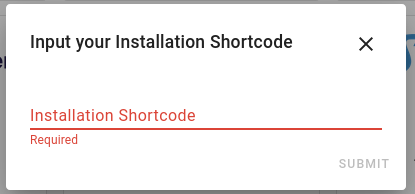Provisioning
A HEMS is provided with a copy of the HEMS software preinstalled, but it must be provisioned to complete the enrolment in the PowerShaper service.
The provisioning procedure involves contacting a server and downloading an x509 key and certificate to the device. These credentials are required by the OpenADR specifications to itentify and authenticate communication between the VTN and VEN.
Provisioning Steps
In the PowerShaper Flex administration system
When a Participant enrols in the PowerShaper service, a 4 word Shortcode is generated and saved in the PowerShaper application.
On the HEMS
The person commissioning the HEMS device prints off a Jobsheet, which includes this four word code.
The commissioner plugs the HEMS and connects it to the internet.
They navigate to the Home Assistant url and create an account and log in.
They add the PowerShaper integration and input the shortcode.

On PowerShaper and PyOADR-VTN server
The PowerShaper integration contacts an endpoint on the PowerShaper site, sending the shortcode, the HEMS ID and the HEMS name in the payload.
The PowerShaper site verifies that the shortcode is valid, and checks that it has not already been used and does not already have a HEMS ID associated with it.
The Shortcode is then associated with the HEMS ID, and marked as used.
The Participant details associated with the Shortcode are then sent to the PyOADR-VTN server. If a customer with these participant details does not already exist on the VTN, a new customer is created using the VTN api.
The PowerShaper site then contacts the VTN to check if there is an existing HEMS associated with the HEMS ID. If not, a new site is created with the HEMS details.
The Participant record in the PowerShaper site is updated with the details of the Customer and Site that have been created on the VTN.
The PowerShaper site then calls an endpoint on the PyOARD-VTN server which generates a PEM bundle certificate for the Site.
The PEM bundle is returned to Home Assistant and saved in a file on the HEMS.
The PowerShaper integration in Home Assistant then contacts an endpoint of the PyOADR-VTN server which returns the Certificate Authority cert.
The CA cert is saved on the HEMS.
The CA cert and PEM bundle are used to identify and verify the VEN when it contacts the VTN.